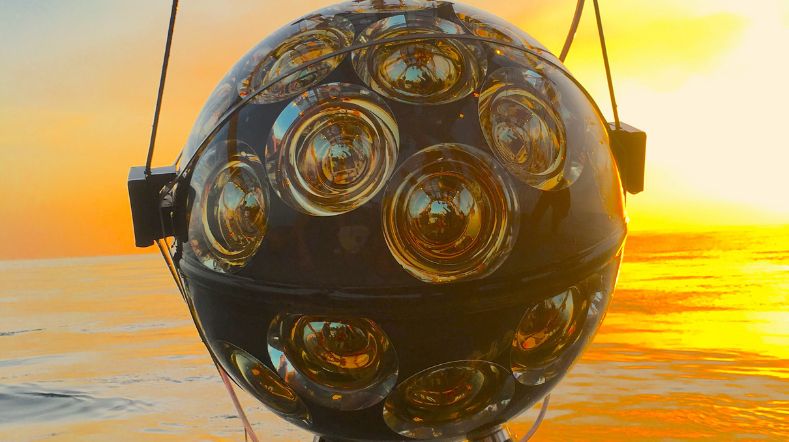
60 Years of Space Innovation: Pioneering Beyond Earth
This year marks the 60th anniversary of TNO’s first space instrument, the S59 spectrometer. This groundbreaking project marked the launch of TNO's extensive impact in space instrumentation, both in orbit and on Earth.
TNO’s 60-year history in space instrumentation showcases a legacy of technological innovation. From pioneering sun sensors to advanced Earth observation systems and next-generation laser data transmission, TNO continues to shape the future of space exploration and global communication. Our contributions play a crucial role in understanding more about the universe, protecting the environment, and ensuring secure, high-speed data networks for the future.
Pioneering Contributions to Space-Based Astronomy
TNO has built a rich history in space-based astronomy, hitting a series of milestones through various projects. Our voyage into space began in 1964, when the now-Netherlands Institute for Space Research (SRON) approached TNO to develop a star spectrophotometer.
This marked the birth of our long-standing collaboration with Europe’s space sector. The spectrophotometer, named S59, was designed to operate in the near-UV range (206-287 nm), capturing highly precise spectra with a resolution of 0.18 nm. It was destined to fly aboard the TD-1A, one of the first satellites launched by the European Space Research Organisation (ESRO), which later became part of the European Space Agency (ESA).
In 1972, Europe’s first 3-axis stabilised satellite, TD-1A, was successfully launched with the S59 instrument on board, gathering valuable data from space. This mission not only marked TNO’s official entry into space research, but also laid the groundwork for future advancements, such as the star mapper we developed for the European Space Research and Technology Centre (ESTEC) in collaboration with the Netherlands Aerospace Laboratory (NLR).
Another early major feat in space instrumentation for TNO came with the development of sun sensors. These devices, designed to orient a spacecraft relative to the sun, were vital for early space missions. Over time, this technology evolved significantly and is now integral to missions today such as the Solar Orbiter (SolO) and BepiColombo.

Star Mappers for the Cluster Mission
Launched by ESA, the Cluster mission was designed to study Earth’s magnetosphere by deploying a constellation of four identical satellites. Unfortunately, the initial launch in 1996 ended in disaster when the Ariane 5 rocket exploded shortly after lift-off due to a software error.
However, TNO’s expertise in developing star mappers – optical instruments that determine the satellites’ orientation by tracking known stars – proved crucial to the mission. ESA rebuilt the Cluster satellites, and TNO delivered the star mappers for the successful relaunch in 2000.
This mission provided invaluable data on the solar wind’s interaction with Earth’s magnetic field, greatly enhancing our understanding of space weather and its effects on satellite operations and communication systems. The star mappers that we developed ensured scientific instruments were accurately aligned, guaranteeing accurate data collection that continues to feed into space research today.
BepiColombo Mission
The BepiColombo mission is a collaborative project between ESA and Japan Aerospace Exploration Agency (JAXA), launched in 2018 to explore Mercury, the least comprehended planet in our solar system. TNO’s technology supports this mission by enabling precise orientation control, crucial for this mission’s two spacecrafts – ESA’s Mercury Planetary Orbiter and JAXA’s Mercury Magnetospheric Orbiter. BepiColombo’s goal is to investigate Mercury’s structure, magnetic field, and geological history, helping us to understand rocky planets like Earth. This mission builds on the discoveries of NASA’s MESSENGER, adding new dimensions to our knowledge of the solar system’s innermost planet.
Solar Orbiter: Unlocking the Secrets of the Sun
TNO’s work is equally instrumental in the Solar Orbiter (SolO) mission, a joint ESA-NASA project launched in 2020. SolO aims to study the Sun at unprecedented proximity, focusing on its polar regions and magnetic activity. The mission provides detailed insights into solar wind and space weather, crucial for understanding phenomena like solar flares and coronal mass ejections. These events have direct implications for Earth’s technology infrastructure, such as satellite communications and power grids. TNO’s contributions to this project underscore our expertise in developing systems capable of withstanding extreme environments, while delivering precise data.

Gaia: Mapping the Milky Way
Another hallmark of TNO’s work in space-based astronomy is our role in the Gaia mission. Launched in 2013, Gaia aims to map over one billion stars in the Milky Way with exceptional precision. Central to the mission’s success is TNO’s Silicon Carbide Basic Angle Monitoring (BAM). This ultra-precise metrology system ensures the stability of the two Gaia telescopes, which are set at a fixed angle of 106.5°. BAM can monitor changes in this angle with an accuracy of 0.5 micro-arcseconds, using a laser interferometer system that detects Optical Path Differences (OPD) as small as 1.5 picometers rms. This system allows Gaia to measure star positions, distances and motions with unprecedented accuracy, providing crucial data for understanding the structure and evolution of our galaxy.

LISA Point Ahead Angle Mechanism (PAAM)
Looking to the future, TNO is actively involved in the LISA Point Ahead Angle Mechanism (PAAM), a critical component of the Laser Interferometer Space Antenna (LISA) mission. Scheduled for launch in the 2030s, LISA aims to detect gravitational waves, offering unprecedented insights into cosmic events like merging black holes and neutron stars. The PAAM is essential for maintaining precise laser alignment between spacecraft, ensuring reliable gravitational wave detection over vast distances.
TNO’s expertise in high-precision opto-mechanical systems has been pivotal in developing the PAAM, which needs to operate flawlessly in the harsh conditions of space. This technological innovation will not only tell us more about the universe but also set new benchmarks in space engineering, with potential applications for future missions and terrestrial technologies.

Advancing Ground-Based Astronomy
TNO’s expertise extends beyond space instrumentation, making significant contributions to ground-based astronomy through the development of advanced optical systems. Over the years, TNO has played a key role in enhancing the capabilities of Earth-based observatories, allowing them to observe the universe with unprecedented clarity. Below are some of the notable projects in this field.
Deformable Mirrors for Adaptive Optics
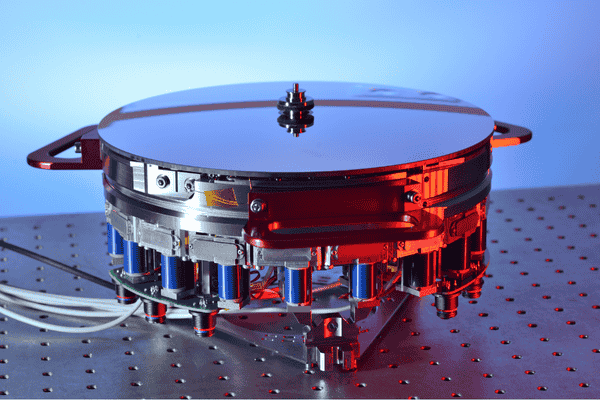
Known for our leadership in ultra-precision opto-mechatronics, TNO develops cutting-edge technologies for telescopes on Earth, including deformable mirrors. These are at the heart of adaptive optics systems, which correct for atmospheric distortion and enhance the image quality of ground-based telescopes.
TNO’s deformable mirror technology has expanded the capabilities of Earth-based telescopes, allowing them to observe the universe with greater clarity and depth. Thanks to adaptive optics systems, ground-based telescopes now rival the imaging power of space-based observatories like the Hubble Space Telescope, further broadening the horizons of astronomical research.
Supporting the Extremely Large Telescope (ELT)
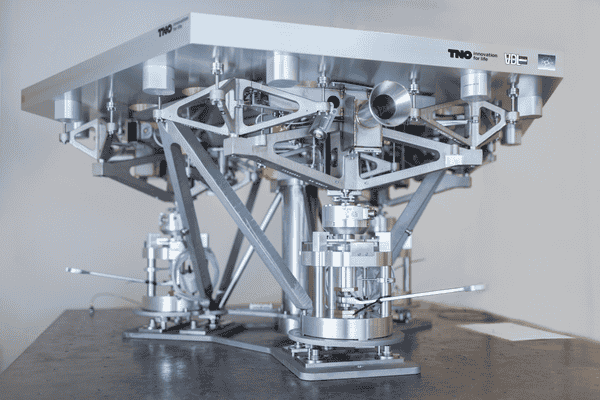
TNO is also helping to drive the development of the Extremely Large Telescope (ELT), a groundbreaking project by the European Southern Observatory (ESO). In collaboration with VDL and NOVA, TNO designed the support structure for the telescope’s Primary Mirror (M1). With a diameter of 39 metres, this mirror is composed of 798 individual hexagonal segments, each measuring 1.4 metres across.
The challenge lies in keeping these segments aligned, which requires corrections within 25-30 nanometres across varying gravitational forces. TNO’s innovative design compensates for these distortions, ensuring the precise alignment necessary for astronomical observations. This accomplishment highlights TNO’s role as a global leader in designing optical systems for astronomy.
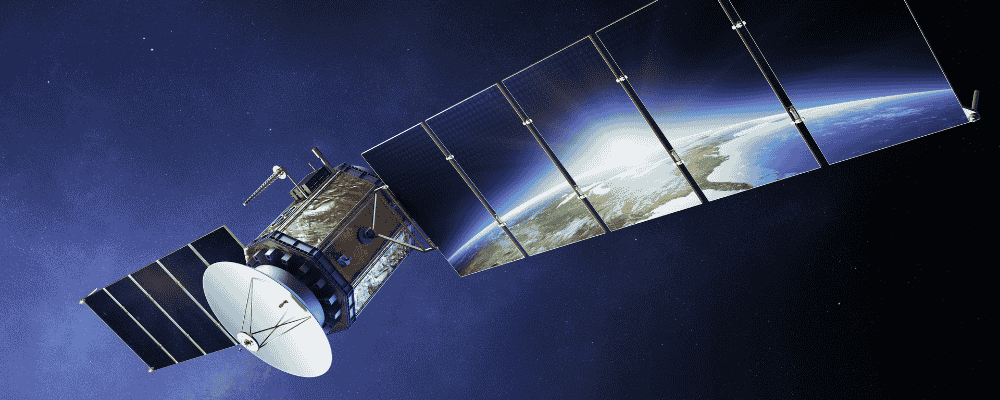
Earth Observation: Monitoring Our Planet
In addition to our work in astronomy, TNO has made vital contributions to Earth Observation, providing critical technologies that monitor environmental conditions, atmospheric changes, and pollution levels on a global scale. These projects are essential for understanding climate change, ozone depletion, and other environmental challenges.
Global Ozone Monitoring Experiment (GOME)
TNO's impact features prominently in the Global Ozone Monitoring Experiment (GOME), launched aboard the ERS-2 satellite in 1995. This project marked a significant advance in atmospheric science by continuously monitoring ozone levels and other trace gases. TNO was instrumental in designing the optical components for the GOME instrument, which used advanced spectrometry to capture high-resolution data crucial for assessing the state of the ozone layer.
GOME’s findings have been vital in teaching us about the effects of human activity on ozone depletion and verifying the success of international treaties like the Montreal Protocol. TNO’s contributions to this project not only enhanced our understanding of atmospheric chemistry but also laid the groundwork for successor missions: GOME-2 and TROPOMI, which continue to provide critical data for climate research and environmental policy.

SCIAMACHY and OMI: Ozone Layer and Air Pollution Monitoring
TNO was pivotal in developing optical systems for the SCIAMACHY and OMI instruments, which monitor global air pollution and track the ozone layer’s recovery. These missions have provided the world with the ability to assess how effective international agreements are, such as the Montreal Protocol, which aims to phase out the production of ozone-depleting substances. SCIAMACHY (launched in 2002) and OMI (launched in 2004) have been critical in understanding how these efforts have impacted global air quality, allowing scientists and policymakers to better gauge the recovery process of the ozone layer.

TROPOMI: Combating Climate Change
A more recent development is the TROPOMI instrument, launched in 2018. Developed by ESA and the Netherlands Space Office (NSO), TROPOMI monitors global methane and other atmospheric gases from day to day. Methane is a potent greenhouse gas, and TROPOMI’s ability to identify super emitters – industries responsible for disproportionately high emissions – has made it a vital tool in the fight against climate change.
TNO designed and built key optical systems for TROPOMI, and its data is now used in initiatives such as the UN’s Methane Alert and Response System. Future missions, including Sentinel-5 and TANGO, will build on TROPOMI’s legacy, improving the quality of global methane and CO2 emission monitoring.

Real-Time Air Quality Monitoring with Lotos-Euros
Additionally, TNO has enabled real-time air pollution tracking for countries with limited ground-based infrastructure. By leveraging satellite data and models like TNO’s Lotos-Euros atmospheric chemistry model, countries can now monitor air quality, detect pollution sources, and issue timely health alerts. This satellite-based capability is particularly valuable for regions lacking traditional air quality monitoring networks, contributing to global public health, and environmental policy efforts.
EarthCARE: Advancing Climate Science through Cloud and Radiation Analysis
The EarthCARE mission, a collaboration between ESA and JAXA, is unique in its focus on studying clouds, aerosols, and radiation – key factors in understanding climate change. Unlike previous Earth observation initiatives, such as those centred on greenhouse gases or air quality, EarthCARE’s primary goal is to improve climate models by studying how clouds and aerosols interact with sunlight and infrared radiation.
TNO’s involvement includes the development of the Multi-Spectral Imager (MSI), which captures high-resolution images of clouds and aerosols, complementing other instruments like the radar and lidar systems. This mission significantly enhances our ability to predict weather patterns and understand climate dynamics by providing a more comprehensive view of atmospheric processes.

Photo credit: ESA
Laser Satellite Communication: Pushing the Boundaries of Data Transmission
With increasing demand for faster, more secure data transmission, TNO has become a leader in developing cutting-edge laser satellite communication technologies. Our innovations advance this groundbreaking technology, delivering high-speed, reliable communication in space as much as on Earth.
SmallCAT: a Milestone in Laser Satellite Communication
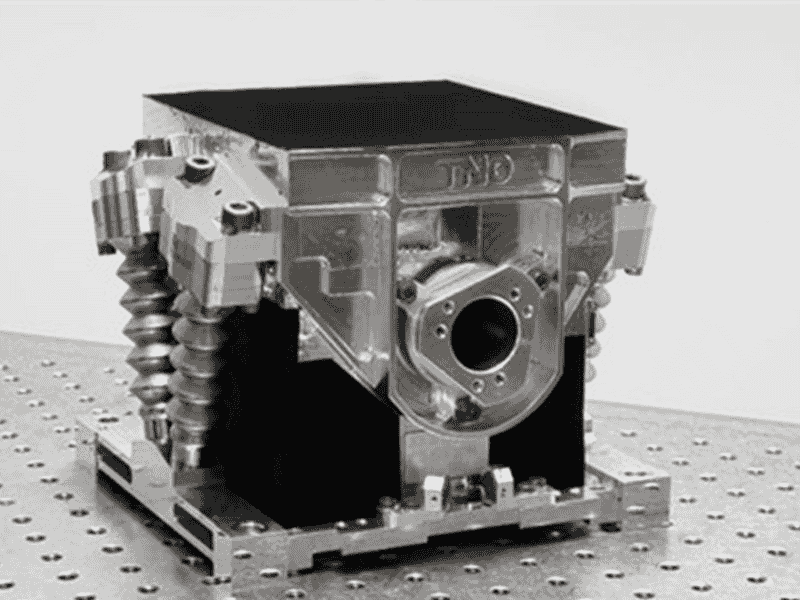
In 2023, TNO and partners launched SmallCAT, a compact laser communication system aboard the Norwegian satellite NorSat-TD. Measuring just 10x10x10 cm, SmallCAT successfully established a laser connection between the satellite and a ground station in The Hague. This milestone demonstrates the feasibility of small-scale laser communication systems and positions the Netherlands as a key player in this rapidly growing field.
TOMCAT and CubeCAT: High-Speed Data Transfer
Building on SmallCAT’s success, TNO is developing TOMCAT, aimed at achieving data transmission rates of terabits per second using high-throughput laser communication. This project focuses on creating large-scale optical ground stations capable of managing multi-terabyte data flows. In doing so, we are responding to the rising demand for secure, high-speed data transfer for applications in telecommunications, broadband services, and scientific research.
Developed by TNO in collaboration with AAC Hyperion, the CubeCAT project explored laser communication for small satellites, or CubeSats. CubeCAT provides data transmission speeds up to 1 Gbps, far exceeding the capabilities of traditional radio systems. This compact system makes small satellite missions significantly more efficient and scalable, particularly in space-constrained environments.
UltraAir: the Future of Airborne Laser Communication
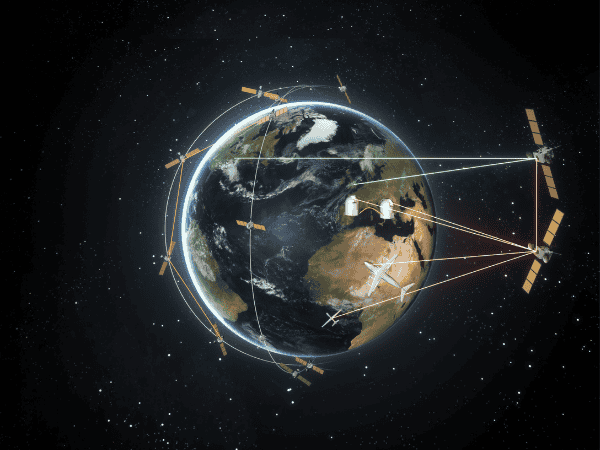
Looking ahead, TNO is working on UltraAir, a project that aims to bring laser satellite communication to aircraft. This system will enable high-speed communication for military and commercial aviation, connecting aircraft in real-time via geostationary satellites like ESA and Airbus’s SpaceDataHighwayTM. UltraAir represents the future of secure, high-speed data links in both aerospace and defence sectors.
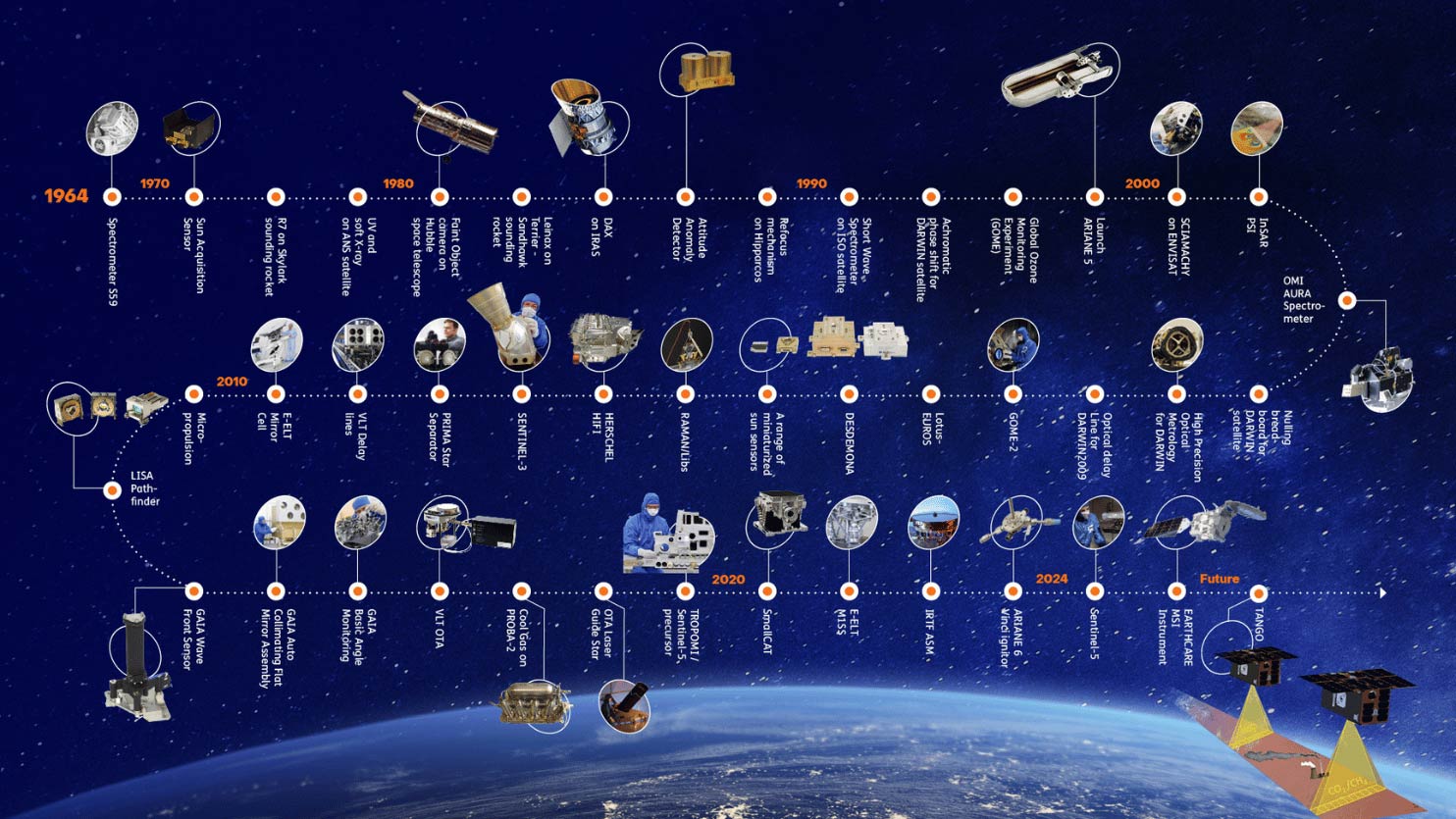
1970: Spectrometer S59, Sun Acquisition Sensor, R7 on Skylark sounding rocket, UV and soft X-ray on ANS satellite
1980: Faint Object camera on Hubble space telescope, Leinax on Terrier - Sandhawk sounding rocket, DAX on IRAS, Attitude Anomaly Detector, Refocus mechanism on Hipparcos
1990: Short Wave Spectrometer on ISO satellite, Achromatic phase shift for DARWIN satellite, Global Ozone Monitoring Experiment (GOME)
1996: Launch ARIANE 5
2000: SCIAMACHY on ENVISAT, InSAR PSI, OMI AURA Spectrometer, Nulling breadboard for DARWIN satellite, High Precision Optical Metrology for DARWIN
2006: Optical delay Line for DARWIN2009
2004: GOME-2,Lotus-EUROS,DESDEMONA, A range of miniaturized sun sensors
2008: RAMAN/Libs, HERSCHEL HIFI, SENTINEL 3
2006: PRIMA Star Separator, VLT Delay lines, E-ELT Mirror Cell
2010: Micro-propulsion, LISA Pathfinder, GAIA Wave Front Sensor, GAIA Auto Collimating Flat Mirror Assembly, GAIA Basic Angle Monitoring
2012: VLT OTA, Cool Gas on PROBA-2
2012: OTA Laser Guide Star
2011: TROPOMI / Sentinel 5 precursor
2022: SmallCAT
2016: E-ELT M1SS
2024: IRTF_ASM, ARIANE 6 Vinci ignitor
2024: EARTHCARE MSI Instrument, Future: TANGO, UltraAIR
TNO 60 years of space innovations
Read more about the 60th anniversary of TNO's pioneering achievements in space instrumentation.
Get inspired
Time setter story: Project manager Stephan van den Broek


Dutch partners announce construction of climate satellite TANGO
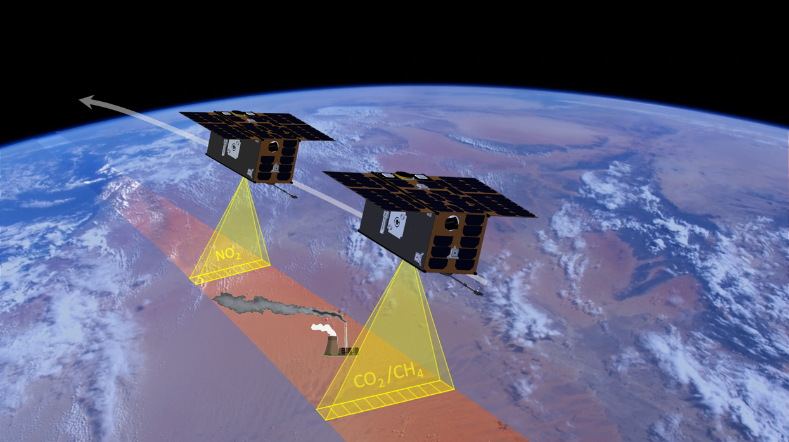

The invisible force behind our daily lives


First Dutch hybrid quantum channel for secure communication successfully established


Deep sea telescope detects highest energy neutrino ever observed
